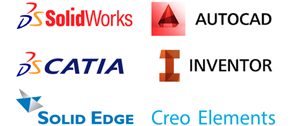Daniel Foré didn’t plan on building an operating system.
In 2006, Foré was fed up with Windows, and he switched to Linux, the open source operating system. But he didn’t just use the OS. Like so many others, he also helped improve the thing. He had no programming experience, but wanted to be involved in this famously communal project, so he designed a set of icons for the OS. And from there, he went to work on a desktop theme called Elementary.
Before too long, he had “forked” the popular Linux file manager Nautilus, creating a new version that looked more modern and streamlined. He called it Nautilus Elementary. And as other designers and developers started getting in touch, asking if they could build design-centric apps under the Elementary banner, he found himself juggling several Linux-related projects.
At that point, it just made sense for him and his team to create their own Linux distribution. “We started working on all these cool apps, and needed a way to ship them all together,” Foré says. The result was Elementary OS, a new version of Linux dedicated to providing a beautiful and powerful operating system that will run well even on old PCs — for free.
There are myriad Linux distros, from Red Hat and CentOS and Ubuntu to Google Android. Most are typically used on computer servers that run things like websites and other big online applications, and most of the headlines go Android, which has reinvented the world of smartphones and tablets. But Elementary OS is different: It’s intended for desktop PCs, which are still very much the domain of Apple and Microsoft.
Foré says Elementary is trying to attract two groups of desktop users in particular: young developers who are new to open source and want an easy way to get started, and non-technical computer users who are fed up with Windows.
There’s definitely a place for Linux on the desktop, says Jim Nelson, executive director of the open source development firm Yorba, which builds the email client Geary and the photo manager Shotwell — both of which are included in Elementary OS. “I realize that mobile phones and tablets are all the rage right now,” he says, “But we don’t think the desktop is dead. We think it has an important role.”
Elementary’s slick Mac-OS-X-like interface and simple applications may help woo some users that have been scared away by the complexity of Linux in the past, but Foré and team aim for more than that. In addition to getting the look and feel right, they want to ensure this is an efficient, stable operating system. Although Elementary is based on the popular Linux distribution Ubuntu, the team has stripped away many of the applications typically included with Ubuntu and replaced them with lighter weight alternatives.
They want to improve what’s already there, but they don’t want to reinvent the wheel. That’s a constant challenge, one the Elementary team says they can solve by focusing on making the OS modular and reusing as many common open source libraries as possible. For example, they created their own lightweight windows manager and desktop environment, but they built it on an open source library called libmutter — the same one used to create the popular Mutter window manager.
But the team still can’t build in-house every application an operating system needs to compete with Windows and OS X. That’s why it’s trying to woo more developers who can help build usable Linux applications. The rub is that the tools and frameworks for building Linux desktop software have lagged behind those offered by Microsoft and Apple, and they’re only recently beginning to catch up, Jordan Hubbard, creator of open source UNIX clone FreeBSD and a former OS X developer, told us earlier this year.
The Elementary team has built their own desktop development framework called Granite to speed up development and ensure consistency between apps. But perhaps more importantly, they’ve standardized a programming language called Vala, which was created in 2006 and is becoming more and more popular in the Linux community.
Nelson says that Yorba decided not to use Granite, but he’s a big fan of Vala. “I really can’t speak highly enough about Vala,” Nelson says. “We’ve had college students turn up who had never written GTK applications before, who were able to be up and running writing patches and features in a week. It’s the kind of language that I wished I had back when I was writing Java in the 1990s.”
Still, with so many competing flavors of Linux and so many other open source projects vying for attention, Elementary has a tough road ahead. But if things don’t work out, the team wouldn’t be out of place in the OS division at Apple. Microsoft? That’s another matter.
via apple - Google News http://news.google.com/news/url?sa=t&fd=R&usg=AFQjCNEa92wDWKc_Cmh45D8Gc6Y3bRvigw&url=http://www.wired.com/wiredenterprise/2013/11/elementaryos/














0 comments:
Post a Comment